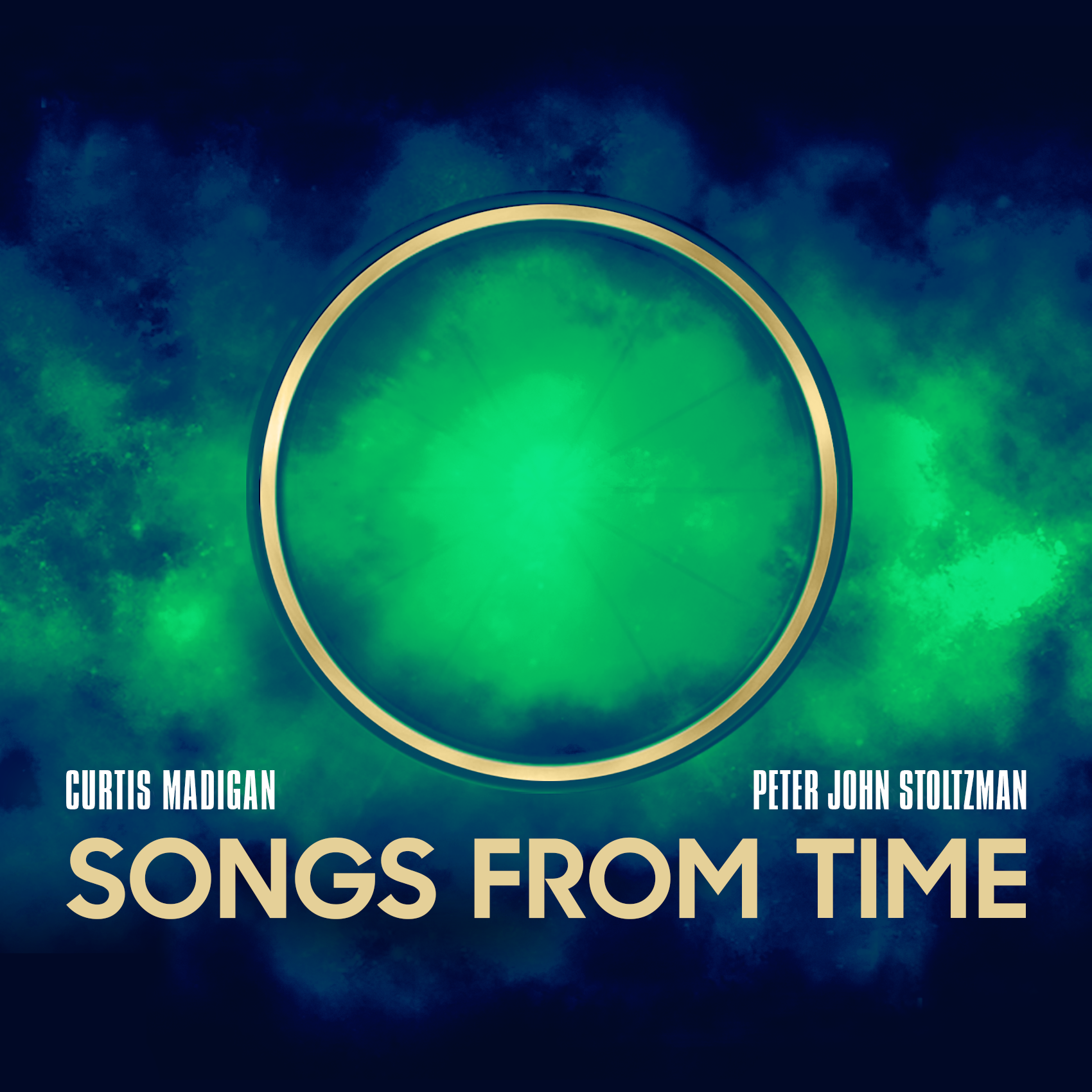Album Links (Available on All Platforms):
 Peter Stoltzman and I co-wrote these pieces based on concepts from my Sound Formation Method™ rhythm theory books. The first piece on Songs From Time is titled “Displacements” and the name refers to the elision shapes taught in the Level 2 Workbook that are displacements of one another. Essentially there’s a rhythmic shape that is displaced each iteration by one sixteenth note and then returns to the original shape. Additionally the initial melody is created from a rhythmic octave of the same shape in the left hand bass line.
Peter Stoltzman and I co-wrote these pieces based on concepts from my Sound Formation Method™ rhythm theory books. The first piece on Songs From Time is titled “Displacements” and the name refers to the elision shapes taught in the Level 2 Workbook that are displacements of one another. Essentially there’s a rhythmic shape that is displaced each iteration by one sixteenth note and then returns to the original shape. Additionally the initial melody is created from a rhythmic octave of the same shape in the left hand bass line.
You can also hear Peter use these shapes as vehicles for improvisation within large flowing phrases. Check out 2:04-2:12 which is a larger phrase utilizing only one of these rhythmic shapes.
The second piece is straight out of my extensive forthcoming books which detail and define hemiolas in a completely new light. My definition of hemiola is scientifically precise and builds on previous Sound Formation Method™ definitions and concepts introduced in earlier levels like syncopation (newly defined), elisions (new definition), and the disambiguation of polyrhythms with inverse ratios, e.g. 3:4 vs 4:3 polyrhythms. This leads to descriptors like 5:4 syncopated hemiolas, which are found in the following piece along with some metric modulation in the ending. Rhythm being part of the very fabric of our existence and inseparable from any aspect of life, the timings are not new, but the understanding of how to approach them, think about them, organize them, and in this case use them as easily as one uses harmonic theory as compositional vehicles is exciting new territory. If you’re interested in understanding the history of hemiolas and how they’re being defined and expanded upon in the SFM you should read this article.
The final piece titled “22323” was based on a rhythmic figure notable for it’s ability to exist in and between a number of time signatures like 2/8, 3/8, 3/4, 6/8, and 12/8. “22323” refers to the groupings of subdivisions whether as sixteenths in 3/4 or as eighths notes in the other aforementioned time signatures. Peter also managed to sneak in a 3:2 feel within his right hand during the beginning section starting at 0:25. In this piece you’ll hear how this rhythmic theme drives the composition forward through many different feels, yet threads them neatly together. These ideas stem from my current and forthcoming books.



